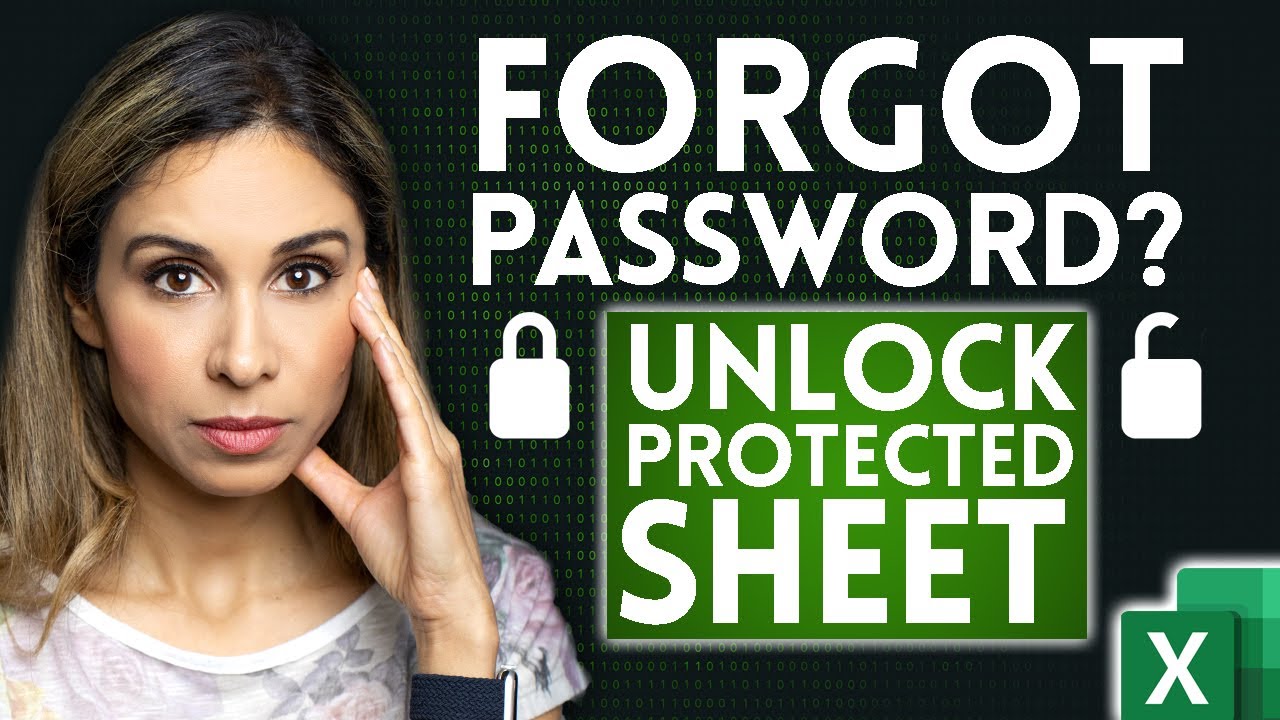Unlock Your Excel Sheets: No Password Required

Excel spreadsheets often contain sensitive information, which is why many users protect them with passwords. But what if you lose the password, or if you inherit a workbook without knowing the password? In this comprehensive guide, we'll delve into various methods to unlock Excel sheets without needing the password, ensuring you can regain access to your critical data efficiently.
Understanding Excel Sheet Protection

Before we dive into the unlocking methods, it’s beneficial to understand what sheet protection in Excel does. Excel allows users to:
- Protect cells from being edited
- Prevent unauthorized users from viewing or modifying formulas
- Control who can insert or delete rows and columns
This functionality is essential for maintaining data integrity, but can be a hurdle if you don’t have access to the password.
Method 1: Using VBA to Remove Sheet Protection

Visual Basic for Applications (VBA) in Excel provides an elegant workaround to bypass sheet protection:
- Open your Excel workbook containing the protected sheet.
- Press Alt + F11 to open the VBA editor.
- In the Project Explorer on the left, find your workbook and double-click on the sheet you want to unprotect.
- In the VBA window that opens, paste the following code:
Sub UnprotectSheet() Dim i As Integer, j As Integer, k As Integer Dim l As Integer, m As Integer, n As Integer Dim v1 As Long, v2 As Long, v3 As Long Dim v4 As Long, v5 As Long, v6 As Long On Error Resume Next For i = 65 To 66: For j = 65 To 66: For k = 65 To 66 For l = 32 To 126: For m = 32 To 126: For n = 32 To 126 v1 = i + j + k + l + m + n v2 = i + j + k + l + m * n v3 = i + j + k * l * m + n v4 = i * j * k + l + m + n v5 = i * j * k * l + m + n v6 = i * j * k * l * m + n ActiveSheet.Unprotect Chr(i) & Chr(j) & Chr(k) & Chr(l) & Chr(m) & Chr(n) If ActiveSheet.ProtectContents = False Then Exit Sub If ActiveSheet.ProtectDrawingObjects = False Then Exit Sub If ActiveSheet.ProtectScenarios = False Then Exit Sub Next: Next: Next: Next: Next: Next End Sub - Run the macro by clicking F5 or the “Run” button. Wait as VBA tries different combinations to unlock the sheet.
- Once the sheet is unprotected, you’ll see the protection indicators disappear from the Excel interface.
⚠️ Note: Use VBA macros with caution. Running macros from untrusted sources can pose security risks.
Method 2: Utilizing Online Services

If VBA seems too technical, there are online services designed to unlock Excel sheets:
- Go to a reliable online Excel password recovery service like LostMyPass or Excel Password Recovery.
- Upload your protected Excel file to their server.
- Wait for the service to process your file and attempt to unlock it.
- Download the unlocked Excel file back to your device.
🔐 Note: Be wary when uploading sensitive documents online. Ensure you choose reputable services with strong privacy policies.
Method 3: Using Third-Party Software

Several software tools can unprotect Excel sheets:
- Excel Password Recovery: A tool by ElcomSoft that can recover both the workbook and sheet protection passwords.
- Guaranteed Excel Password Recovery: From Passware, this software attempts to recover or bypass password-protected Excel sheets.
- Advanced Office Password Recovery: An ElcomSoft tool offering professional-grade password recovery options.
🛡️ Note: Some of these tools might require payment for full functionality, especially if the protection is robust.
Legal and Ethical Considerations

Before employing any of these methods to unlock Excel sheets, consider the following:
- Ensure you have the legal right to access the data you are attempting to unlock.
- Respect intellectual property rights and confidentiality agreements.
- Use these methods for recovery purposes only, not for unauthorized access or theft of information.
⚖️ Note: Unauthorized access to protected information can lead to legal consequences.
Summing Up

We’ve explored various methods to unlock Excel sheets without requiring passwords, including VBA macros, online services, and third-party software. Each method has its pros and cons in terms of ease, reliability, and ethical considerations. By understanding and utilizing these techniques, you can access data when passwords are lost or forgotten. However, always approach with caution, ensuring you respect privacy and legal boundaries.
What is the difference between workbook and sheet protection?

+
Workbook protection prevents changes to the structure of the workbook, such as adding or removing sheets, while sheet protection locks individual cells, preventing data changes or modifications to formulas within a specific sheet.
Can these methods unlock any Excel sheet?

+
Most methods can unlock sheets protected with standard passwords, but very complex or encrypted Excel protection might require specialized software or services.
Is there any risk to my Excel data when using these unlocking methods?

+
While methods like VBA are relatively safe, online services or third-party tools could potentially alter or damage the data if not used correctly. Always backup your files before attempting to unlock them.
What if I need to re-protect the Excel sheet after unlocking it?

+
After unlocking the sheet, you can simply go to the Review tab, select ‘Protect Sheet,’ and enter a new password to reapply protection.
Are there ethical concerns with unlocking someone else’s Excel sheet?

+
Yes, there are significant ethical and legal concerns. Unlocking sheets without permission can be considered unethical or even illegal if it involves accessing sensitive or proprietary information without authorization.



